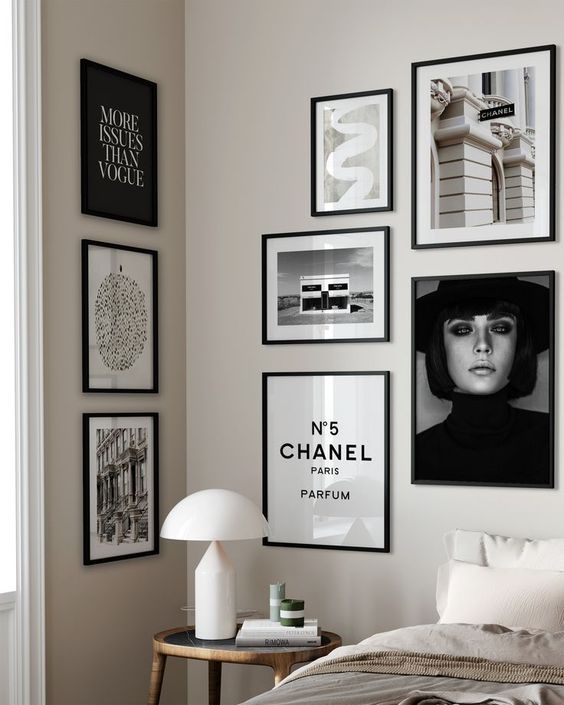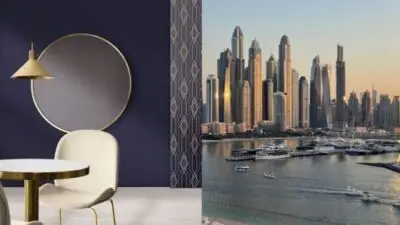Photography plays a crucial role in modern home design, shaping perceptions and creating emotional connections with spaces. High-quality images not only capture the aesthetic appeal of a room but also allow potential buyers and clients to envision themselves living in that environment. This visual storytelling can significantly influence design choices and marketing strategies.
In today’s digital age, how a home is photographed can make or break its appeal. Close-up shots reveal textures and details that highlight the quality of materials used, bringing a sense of depth and richness to the design. Social media platforms amplify this effect, showcasing not just the spaces but the stories behind them, making photography an essential tool for designers and homeowners alike.
As individuals seek to create their ideal living environments, the synergy between photography and design becomes increasingly evident. The right images can convey a lifestyle, evoke feelings, and inspire creativity, making photography an integral part of the modern design narrative.
The Evolution of Photography in Interior Design
Photography in interior design has transformed significantly over the decades. From primarily serving as a means of documentation to becoming an essential tool for marketing and branding, the role of photography has expanded alongside the evolution of design trends and technologies.
From Documentation to Decoration


In the early days, interior photography focused mainly on documenting spaces for magazines and design portfolios. This straightforward approach captured rooms as they were, emphasizing architectural elements and furniture arrangements.
As design became more central to lifestyle branding, the purpose of photography shifted. It started to highlight atmospheres and emotional responses rather than just physical spaces. Professional photographers began to utilize techniques like soft lighting and curated compositions, turning images into artistic representations of lifestyle aspirations.
This change allowed designers to communicate their vision more effectively. Interior photography became a crucial marketing tool, helping both designers and clients express their brand identities through visual storytelling.
Rise of the Digital Era in Home Decor


The advent of digital technology revolutionized interior photography. High-resolution images became the norm, elevating the quality of visuals shared online.
Social media platforms like Instagram and Pinterest have further impacted how interior design is presented. Users now seek visually engaging content that inspires trends and ideas. As a result, photographers often focus on creating striking, stylized images that capture attention quickly.
Additionally, advanced editing tools have enabled photographers to manipulate images to enhance colors and shapes. This capability allows designers to present their work in the best light, literally and figuratively.
Moreover, online listings featuring professional-quality images have been shown to generate substantially higher engagement compared to those with inferior visuals. This emphasizes the importance of quality photography in attracting potential clients and making spaces memorable.
Incorporating Photographic Art in Modern Homes
Modern homes benefit greatly from the integration of photographic art. It adds personality and character while enhancing the overall aesthetic. By carefully selecting images, mixing styles, and choosing the right presentation, individuals can elevate their living spaces remarkably.
Choosing the Right Photos


Selecting the right photographs is crucial in achieving a cohesive look. One effective strategy is to choose images that reflect themes found throughout the home. For instance, nature photography can create a calming atmosphere, while urban shots may add a vibrant edge.
When selecting images, consider the emotional tone you wish to convey. This can be identified through the colors, subjects, and styles of the photos. Darker images could evoke a sense of drama, while lighter, brighter photos bring cheerfulness.
Mixing Styles and Genres


Mixing different styles and genres of photography can create visual interest. A combination of abstract art with traditional landscapes can foster an engaging dialogue in a room. This interplay encourages exploration and connection within the space.
It’s essential to maintain balance when mixing styles. Pair diverse works that complement each other through common colors or themes. For instance, a large black-and-white photograph can anchor a gallery wall of colorful nature shots, ensuring harmony amid variety.
Framing and Presentation Options
Framing and presentation play significant roles in how photographic art influences a space. Frameless presentations using acrylic or glass mounts create a minimalist look, allowing the artwork to stand out without distraction. This approach is particularly effective in modern designs where simplicity is prized.
Alternatively, traditional frames in contrasting colors or textures can add depth. Incorporating different frame styles can emphasize the unique character of each piece. Be mindful of arranging artworks in a way that enhances their visual impact while considering wall space and layout.
Photography and Color Theory in Design
Photography and color theory play a crucial role in modern home design, shaping how spaces are perceived. Understanding color schemes and creating focal points are essential elements that enhance visual storytelling and audience engagement.
Understanding Color Schemes


Color schemes create emotional responses and influence perceptions of space. There are several key color schemes to consider:
- Monochromatic: Using different shades of a single color creates a cohesive look.
- Analogous: Colors next to each other on the color wheel promote harmony.
- Complementary: Opposite colors provide vibrant contrast, drawing attention.
In photography, capturing the right color combinations is vital. Effective use of color enhances image quality and can help highlight specific design elements. For instance, a living room with warm tones photographed in natural light can evoke a cozy atmosphere. Understanding these schemes can guide designers in choosing the right palette for a project.
Creating a Focal Point


A focal point directs the viewer’s attention and boosts visual interest in a photograph. This can be achieved through various techniques:
- Contrasting Colors: Utilizing a bold color against a neutral backdrop can create a striking focal point.
- Lighting: Strategic use of light can enhance colors and draw attention to particular areas.
- Composition: Placing key elements according to the rule of thirds helps to naturally guide the viewer’s eye.
Photographers should emphasize furniture or decor pieces in their shots to enhance the design’s appeal. This not only showcases the interior but also emphasizes the relationship between color and space, achieving a harmonious balance in modern design.
The Impact of Photo Imagery on Living Spaces
Photographic imagery significantly influences how living spaces are perceived. It affects emotional responses and alters spatial perceptions, making environments feel inviting or constricting.
Psychology of Visual Elements


Visual elements in photography, such as light, color, and composition, evoke specific emotions. Bright and warm colors elicit feelings of happiness and comfort, while cooler tones can impart calmness and serenity.
Consider the following effects of color in photography:
- Warm colors: Increase energy and warmth.
- Cool colors: Promote relaxation and tranquility.
- Lighting: Enhances mood; natural light broadens space perception.
These attributes help potential buyers visualize themselves in a space, enhancing their emotional connection. Quality photos serve as more than mere depictions; they shape perceptions and experiences within each room.
Spatial Perception and Photography


Photography alters spatial perception by utilizing angles and composition to create depth. Certain techniques, such as wide-angle shots, can make smaller rooms appear larger.
Key techniques include:
- Framing: Drawing the eye to focal points.
- Perspective: Using lines to guide viewers through a space.
- Light and Shadow: Creating dimension and interest.
When images highlight well-designed spaces, they not only showcase aesthetics but also illustrate functional possibilities. Effective photography draws attention to unique features, ultimately influencing potential buyers’ perceptions and decisions about a home.
- 584shares
- Facebook0
- Pinterest584
- Twitter0


